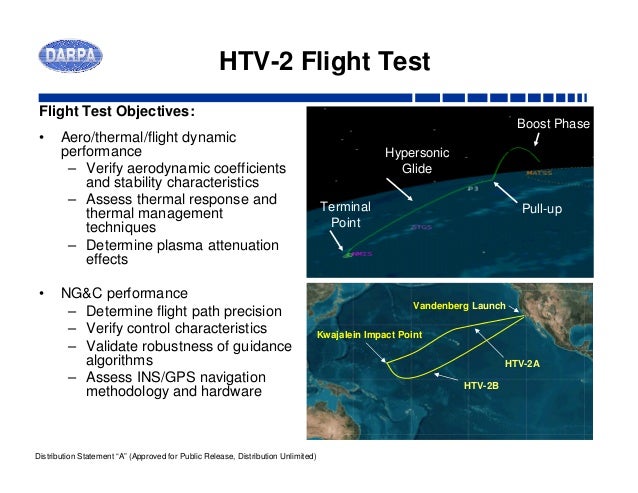Fair enough, bro.
The term
HYPERSONIC is a
marketing designation.
Delivery vehicles vary in their design and resultant flight characteristics, and performance parameters, on the other hand.
Technically speaking - a
ballistic missile can be a
hypersonic delivery vehicle [1], but its flight characteristic is different from that of a
scramjet-powered hypersonic glide vehicle (refer to my earlier post in which I posted relevant images).
Any delivery vehicle designated as
hypersonic glide vehicle (HGV) refer to a type of vehicle with the capability to re-enter Earth's atmosphere
soon after the
boost phase, and maintain hypersonic flight speed levels with a scramjet propulsion within edo- atmospheric conditions for prolonged duration during the course of its flight.
[1] For reference:-
Good explanation in this link:
http://missiledefenseadvocacy.org/m...iferation/missile-basics/hypersonic-missiles/
Now, every
scramjet-powered hypersonic glide vehicle is not MACH 20+ rated for
sustained flight in endo- atmospheric conditions; forces of friction can disintegrate an HGV
if it is not hardened enough which in turn is not an easy feat of engineering.
American HGV Talon 2 is MACH 20+ rated
Russian HGV Avangard is MACH 20 rated
Chinese HGV DF-ZF is MACH 10 rated
In summation:-
Ballistic missile = prolonged hypersonic speed levels in exo- atmospheric conditions (re-entry for short duration)
HGV = prolonged hypersonic speed levels in endo- atmospheric conditions (re-entry for long duration)
Both can be shot down regardless - depends upon what type of defensive system is involved.







